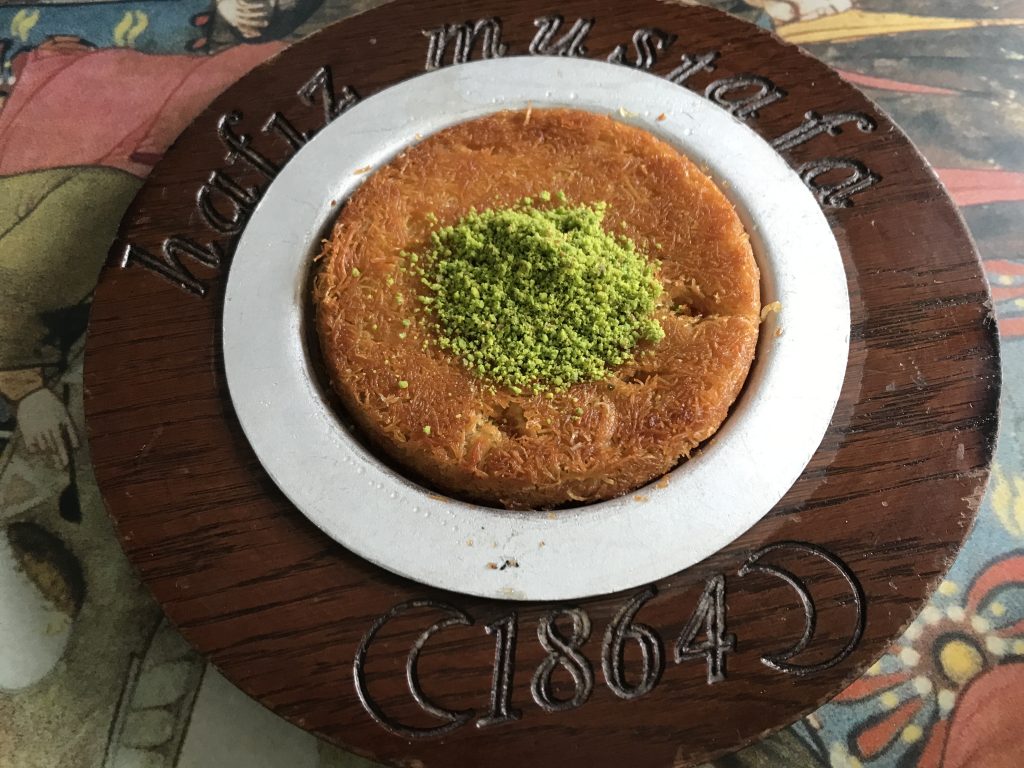In my last blog, we wandered through the echoes of Byzantium in Hagia Sophia, the summit of its civilization embodied in stone.
I’ll have more to share about this most venerable empire in an upcoming article, but first we must visit the world of the Ottomans. What better place to meet their shades than Topkapi Palace, home of Sultans and seat of government for nearly 400 years?
Topkapi Palace was built by Mehmed II six years after he captured Constantinople, using the best craftsmen, masons, stonecutters and carpenters that the growing empire could provide.
The complex expanded over the centuries, with various fires and renovations, and it formed the heart of Ottoman power for almost four centuries. It only fell out of favour in the 17th century, when the rulers of that effete, less militarily successful period began spending more time in their pleasure palaces along the Bosphorus.
Topkapi was finally abandoned by Sultan Abdulmejid I in 1856, who built Dolmabahçe Palace on the Bosphorus as an antidote to Topkapi’s lack of contemporary luxury and comfort. The old palace retained some functions, including the library, mint and Imperial treasury, but the waning decades of the Empire were played out in more European surroundings.

Topkapi is a series of nested courtyards and buildings containing hundreds of chambers and rooms rather than the single edifice or castle we imagine when we think of a European palace. It sprawls across Seraglio Point, a promontory with commanding views of the Golden Horn and the point of convergence of Bosphorus and Sea of Marmara, with the Sultan’s private quarters occupying the highest point.
The design of the palace itself reflected Mehmed II’s code governing the administrative hierarchy of empire, the order and rank of court officials, and matters of protocol. Each monumental gate and each courtyard brings us closer to the centre of power.
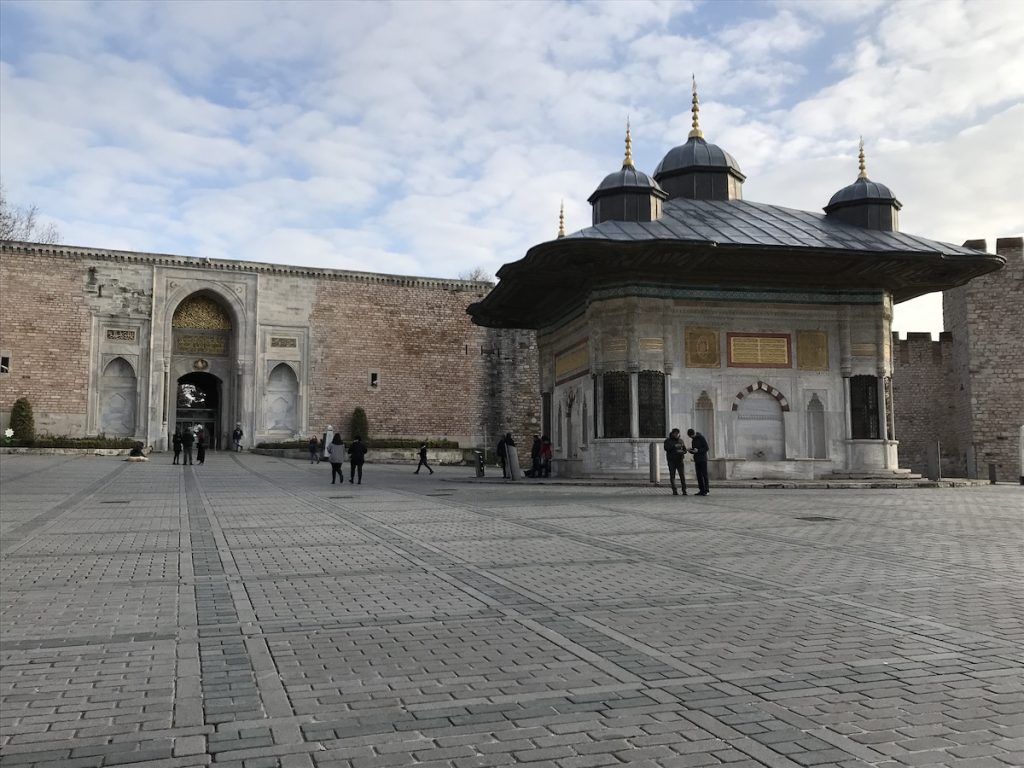
We entered the high outer walls of the palace early one morning through the massive Imperial Gate, next to the back of Haghia Sophia.
The outer precinct — or First Courtyard — is the largest in Topkapi, a world of broad lawns and gardens, the remains of the Imperial Mint, and the shell of the Byzantine church of Hagia Irene (ca. 4th century), one of the few in Istanbul which wasn’t converted into a mosque. The Ottomans used it to store weapons, instead.
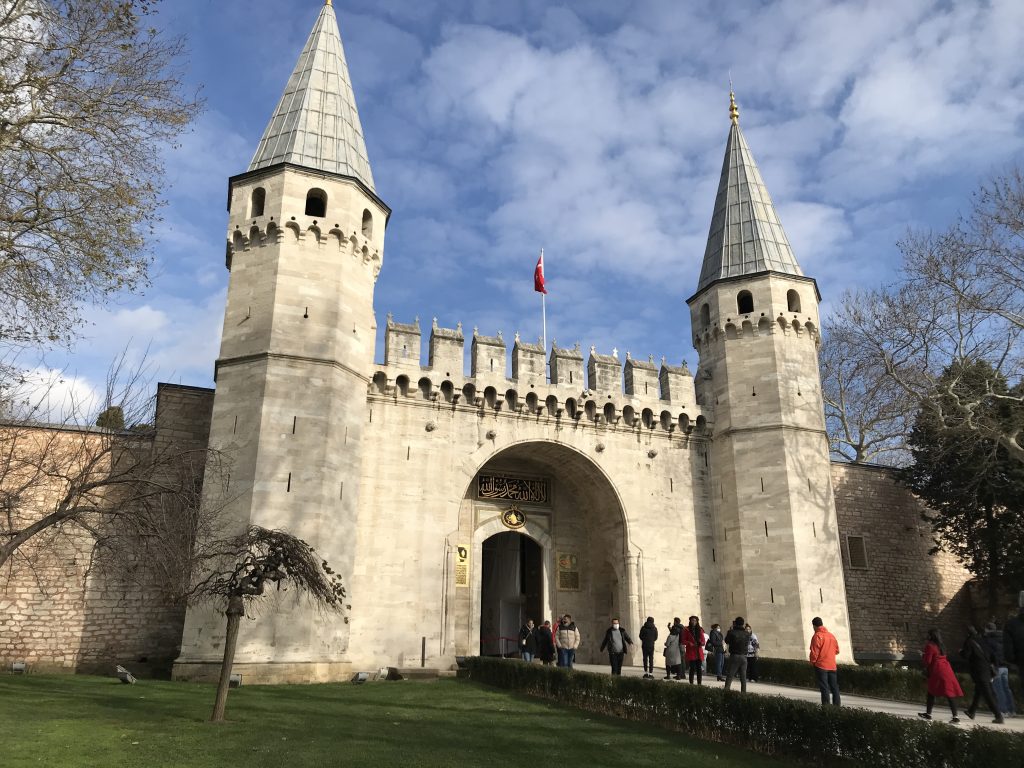
The Second Courtyard is guarded by the two-pointed Gate of Salutation.
This was the realm of courtiers and consultations, and where the Grand Vizier and council ministers (the Divan, so-called because of the couch on which they sat) met in the Imperial Council chamber to discuss matters of State. They could be watched at any time by the Sultan through a grilled window high in the wall.
The so-called Divan Meydani (Divan Square) was also used by the Sultan for special ceremonies on religious and festive days.
Around the perimeter, you’d find the kitchens, the palace bakery, stables, and the quarters of the elite Janissary corps. This courtyard also houses the Imperial Treasury. I saw it when I was here ten years ago, but unfortunately it and the treasury in the next courtyard were both closed for renovations this time.
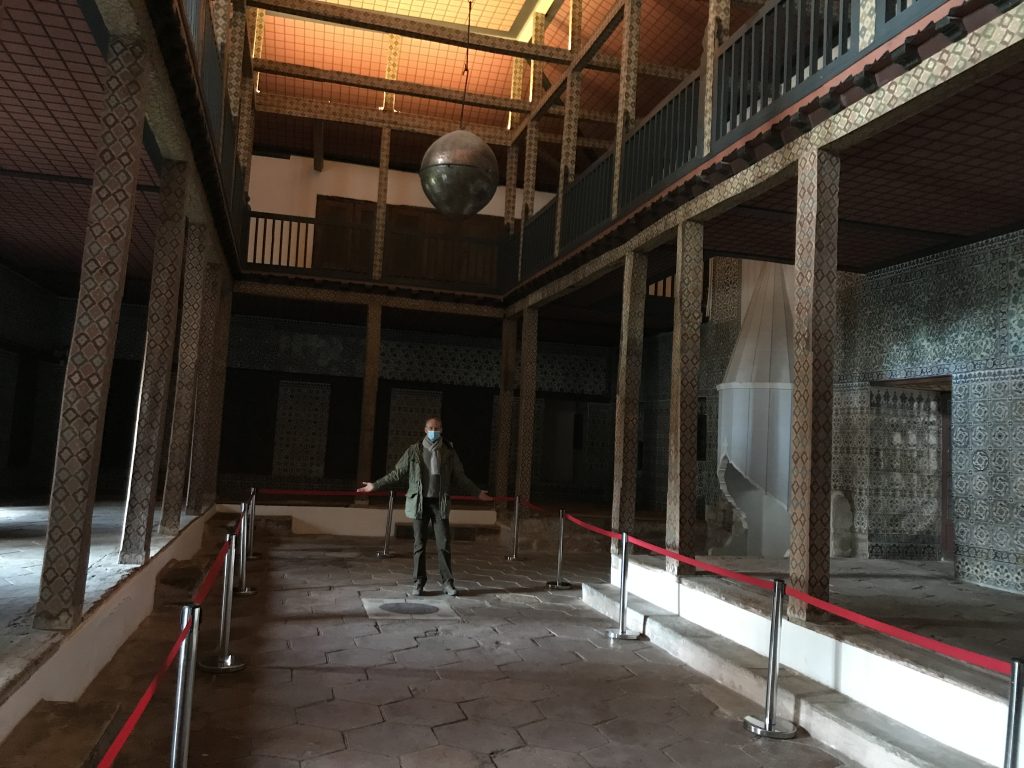
Note: If you’re just visiting the palace with a ticket rather than petitioning the sultan, you’ll find the tourist entrance to the harem tucked away behind the Imperial Council hall. Go there first, before the entire museum is overrun by barging tour group hordes. It truly is the most remarkable section of Topkapi. More on that later.
First we must go to the Third Courtyard — the Inner Palace — by way of the Gate of Felicity. No one could pass through here without the authority of the Sultan — including the Grand Vizier — but it’s okay, just tell him you’re with me.
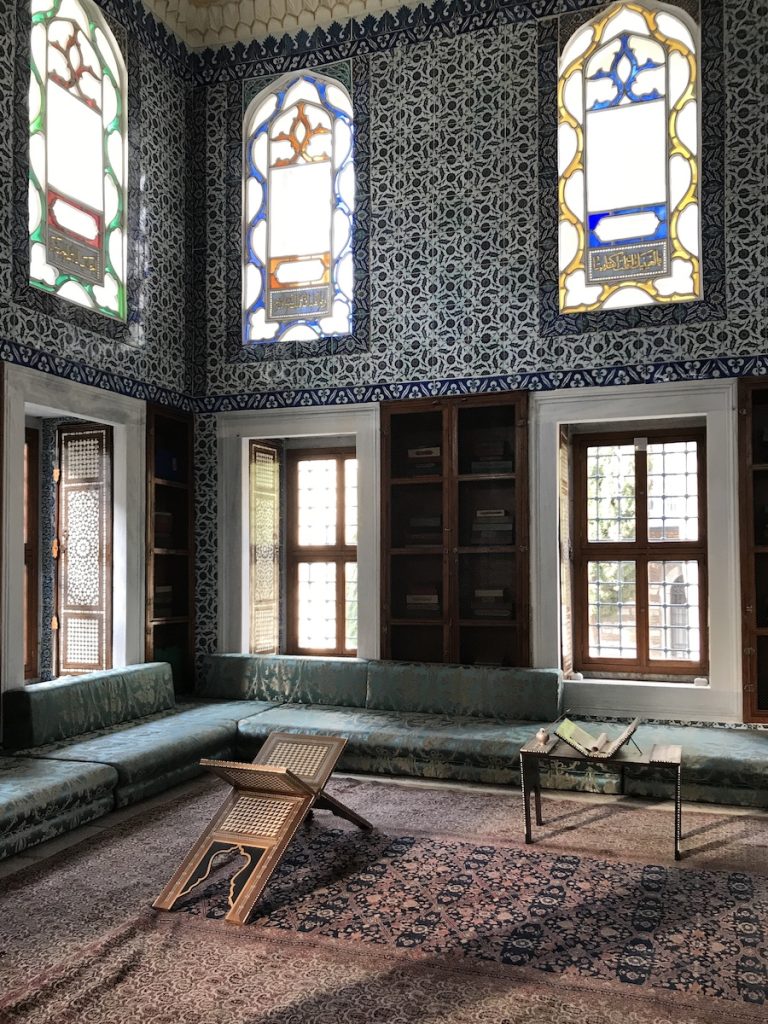
This is the heart of Topkapi Palace, with its impressive Audience Chamber and the Library of Sultan Ahmed III surrounded by carefully tended gardens. Around the perimeter you’ll find another treasury filled with precious objects ( a must-see when it’s open), rooms housing other palace collections, a mosque, and the dormitory of the royal pages, where they were taught the arts that would allow them to become high ranking palace officials.
The Audience Chamber — or Chamber of Petitions — is a colonnaded kiosk immediately beyond the gate, exquisitely decorated with blue, white and turquoise tiles, precious carpets and pillows. The Sultan received visitors and foreign ambassadors here on his jewel-encrusted throne.
The courtyard also houses the main entrance of the Imperial Harem. Today it’s where visitors exit.
You should know from the start that the word ‘harem’ comes from the Arabic ‘haram’, which simply means sacred or forbidden. While it may not be the adolescent orgy with concubines from every cultural corner of the empire that you were fantasizing about (okay, that I was fantasizing about), an assortment of lovely ladies did live here, and the Sultan had his pick.
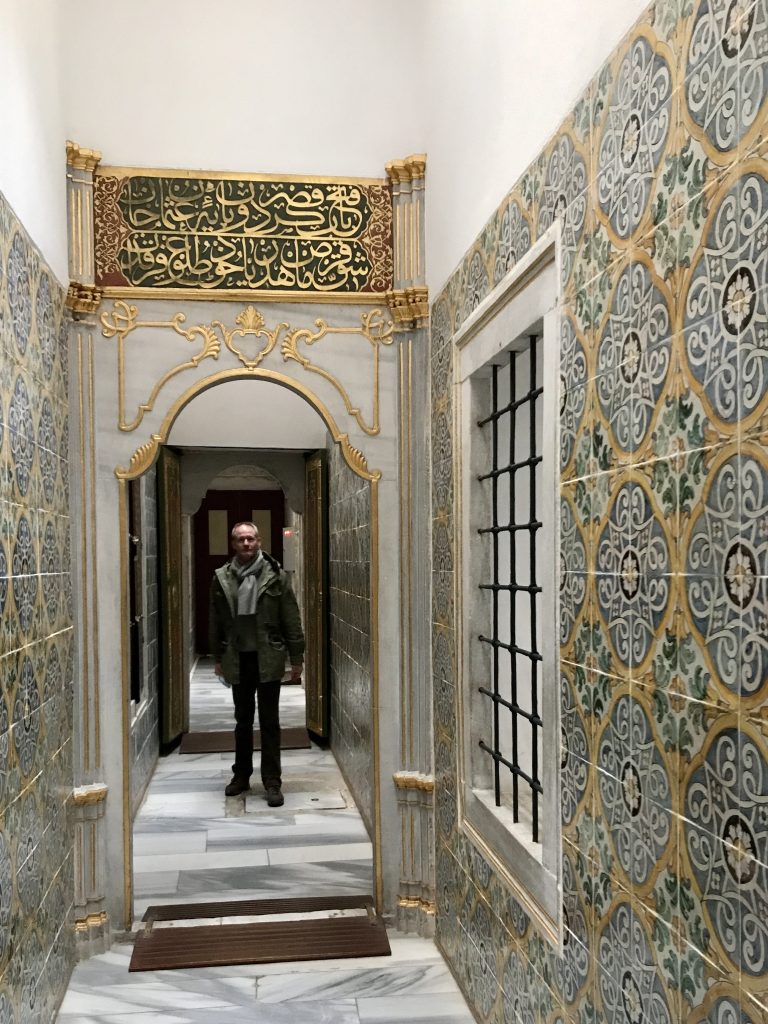
The harem housed the private apartments of the Sultan, his wives, children and assorted concubines, as well as the Valide Sultan (mother of the reigning Sultan, second only in power to the Sultan himself), and all their servants.
This maze of buildings, hallways and courtyards contained some 400 rooms, only a few of which are open to the public, with each service team and hierarchical group having their own living space clustered around a courtyard. Only those who lived here were allowed inside.
Oh, you’re allowed inside too, if you purchased the extra ticket. Make sure you do, because it truly is the most impressive section of Topkapi Palace. The big bus tour groups don’t seem to come here, and covid travel restrictions meant few others did either. We had most of the rooms to ourselves, and even when we encountered other visitors, they were few and they moved on quickly.
I can’t begin to describe the functioning of the harem or its many rooms, many of which were built by the legendary imperial architect Mimar Sinan. This blog is already far too long.
Check out the links I’ve included in this article for a run down of the main features. And pay special attention to the remarkable profusion of Iznik tiles throughout this section of the palace. Volumes could be written about them alone.
Be sure to leave plenty of time for the absolutely incredible Imperial Hall, the room where the Sultan received his confidants, mother, wives and consorts for live music and light refreshments. You’ll want to stay here for ages soaking up some of the most incredible tile work you’ve ever seen.
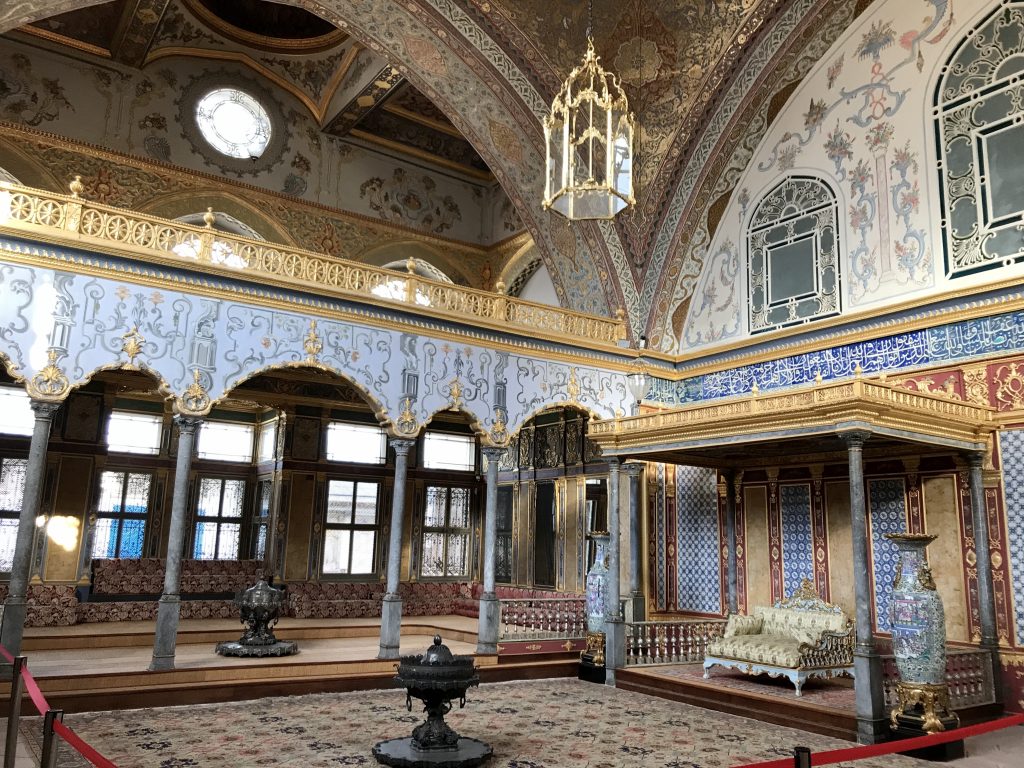
When you’ve had your fill of the harem and its ladies, go back to the Third Courtyard and pass into the Fourth. You’re still in the private sanctuary of the Sultan, in a beautiful two-level garden where elegant pavilions and kiosks (köşk) offer broad views of the Golden Horn and Sea of Marmara.
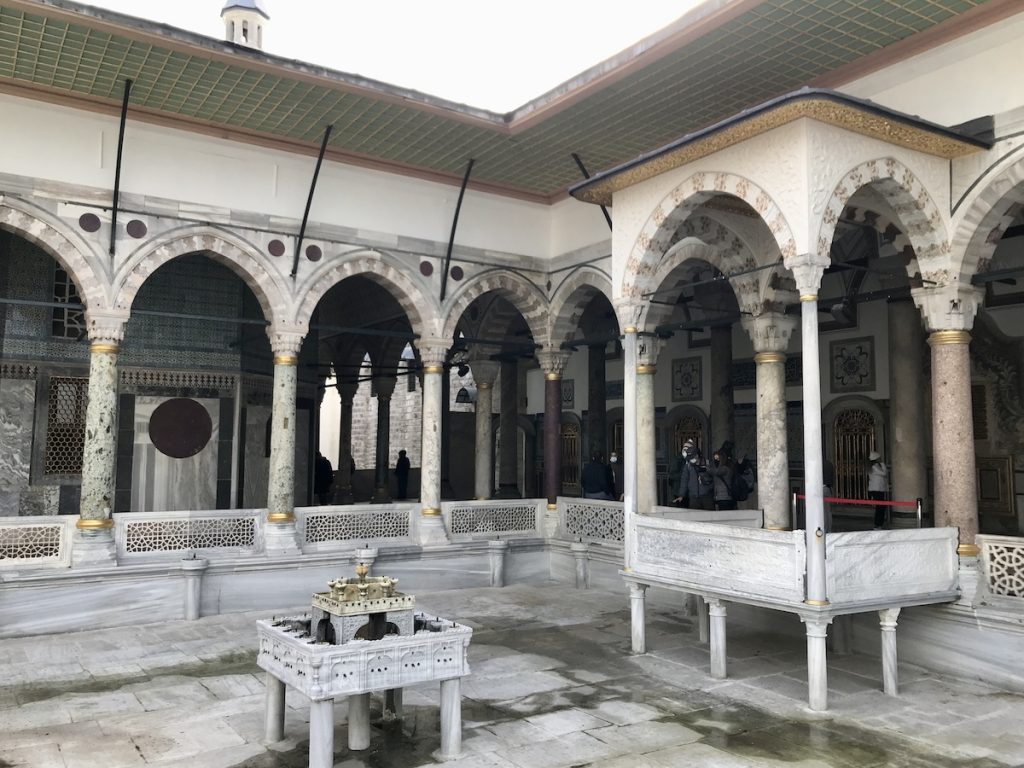
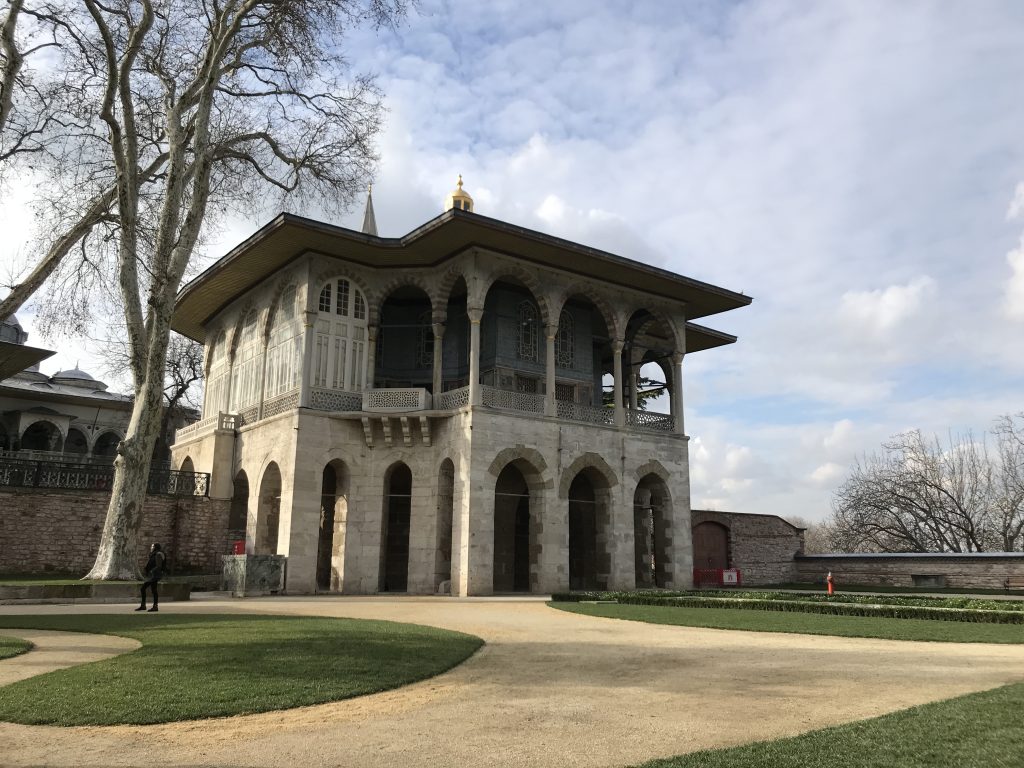
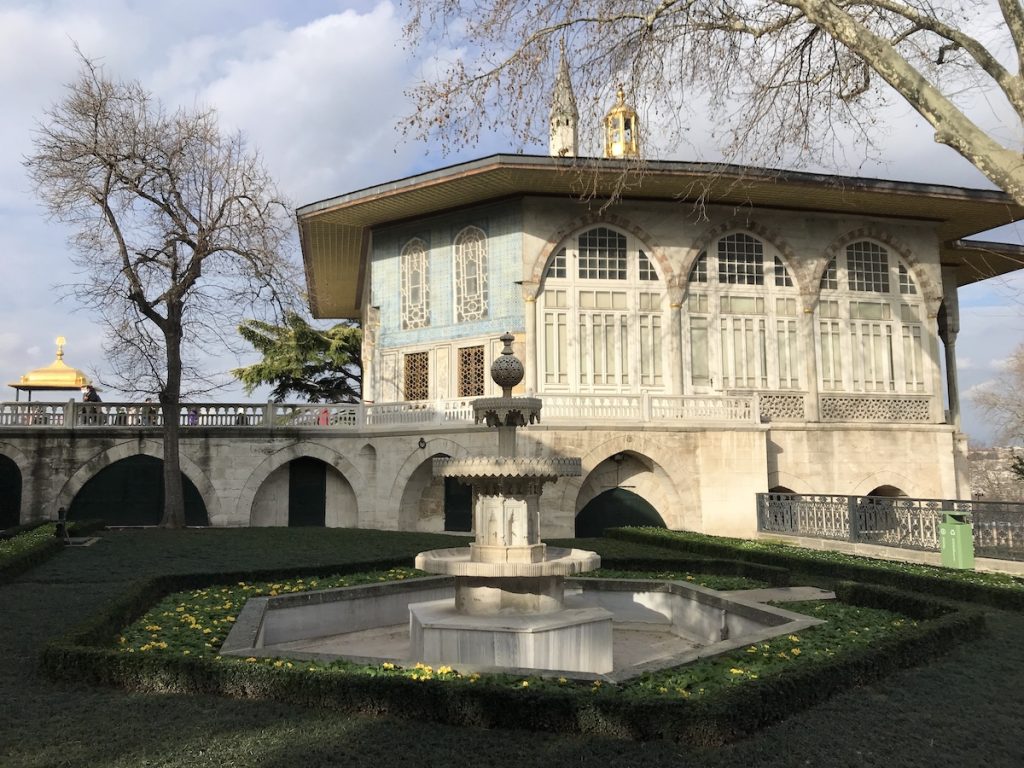
And when you’ve had your fill of that, drag your exhausted carcass out beyond the Imperial Gate and join me at Hafiz Mustafa for a Turkish coffee and some baklava. This popular sweet maker was founded in 1864 during the reign of Sultan Abdulaziz, and you’ll find its cafes all over the city.
